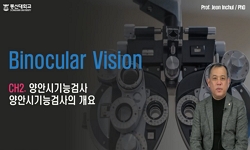The purpose of this article is to understand the control factors for Lefevere’s ‘refraction’ through functional relationships with translation norms and to analyze the refraction patterns of children's literature by applying this information to ...
http://chineseinput.net/에서 pinyin(병음)방식으로 중국어를 변환할 수 있습니다.
변환된 중국어를 복사하여 사용하시면 됩니다.
- 中文 을 입력하시려면 zhongwen을 입력하시고 space를누르시면됩니다.
- 北京 을 입력하시려면 beijing을 입력하시고 space를 누르시면 됩니다.

청소년 문학의 ‘굴절(refraction)’ 양상 연구: 번역규범과의 기능적 관계를 중심으로 = The ‘Refraction’ Aspect of Young Adult Literature: Focus on Functional Relationships with Translation Norms
한글로보기https://www.riss.kr/link?id=A108504493
- 저자
- 발행기관
- 학술지명
- 권호사항
-
발행연도
2022
-
작성언어
Korean
-
주제어
르페브르 ; 굴절 ; 청소년 문학 ; 번역규범 ; 이데올로기 ; 시학 ; Lefevere ; refraction ; young adult literature ; translation norms ; ideology ; poetics
-
등재정보
KCI등재
-
자료형태
학술저널
-
수록면
163-199(37쪽)
- DOI식별코드
- 제공처
-
0
상세조회 -
0
다운로드
부가정보
다국어 초록 (Multilingual Abstract)
For Lefevere, text refraction is 'acculturation' caused by control factors of the TT socio-cultural system, and the categories and contents are ambiguous in the relationship between one another, making it difficult to apply them in practice because control factors are conceptualization of the culture. Attempts to understand refraction in terms of translation norms are attributable to the following three reasons: first, both Lefevere and norm theorists share the hypothesis that 'translation is a manipulation within the TT culture' and find the purpose and the cause of text transformation in the TT culture system; second, norms play a functionally similar role to control factors in such a TT culture system; and finally, the correlation between norms and text transformation is relatively clear in scope and content compared to the relationship between Lefevere's control factors and refraction. This is because the allowable range is relatively narrow compared to adult literature, making it easy to categorize through inductive research.
Therefore, the purpose of this article is to understand the control factors of refraction as norms in terms of functionality and categorize the contents of norms into the following four categories: 1) enhancement of socially and educationally appropriate values for young adults’ emotions, 2) preservation of Korean values in young adults' ethics and morals, 3) use of language suitable for cognitive and language development in young adults, and 4) better understanding and easy delivery, and then compare this with TT1 based on the existing empirical research on the norms of children’s and young adult literature, and finally analyze the refraction patterns of TT2 by control factors to gain an opportunity to assess the desirable translation direction of young adult literature.
The purpose of this article is to understand the control factors for Lefevere’s ‘refraction’ through functional relationships with translation norms and to analyze the refraction patterns of children's literature by applying this information to two types of translations with different readers of Chinese children's literature, “紅瓦”, TT1 for adults, and TT2 for young adults.
For Lefevere, text refraction is 'acculturation' caused by control factors of the TT socio-cultural system, and the categories and contents are ambiguous in the relationship between one another, making it difficult to apply them in practice because control factors are conceptualization of the culture. Attempts to understand refraction in terms of translation norms are attributable to the following three reasons: first, both Lefevere and norm theorists share the hypothesis that 'translation is a manipulation within the TT culture' and find the purpose and the cause of text transformation in the TT culture system; second, norms play a functionally similar role to control factors in such a TT culture system; and finally, the correlation between norms and text transformation is relatively clear in scope and content compared to the relationship between Lefevere's control factors and refraction. This is because the allowable range is relatively narrow compared to adult literature, making it easy to categorize through inductive research.
Therefore, the purpose of this article is to understand the control factors of refraction as norms in terms of functionality and categorize the contents of norms into the following four categories: 1) enhancement of socially and educationally appropriate values for young adults’ emotions, 2) preservation of Korean values in young adults' ethics and morals, 3) use of language suitable for cognitive and language development in young adults, and 4) better understanding and easy delivery, and then compare this with TT1 based on the existing empirical research on the norms of children’s and young adult literature, and finally analyze the refraction patterns of TT2 by control factors to gain an opportunity to assess the desirable translation direction of young adult literature.
국문 초록 (Abstract)
이 글은 기능적 측면에서 굴절의 제약요인을 ‘규범’으로서 이해하고, 이를 중국 아동문학인 『紅瓦』의 2종 한역본, 즉 성인 대상의 TT1과 청소년 대상의 TT2에 적용하여 아동문학의 굴절 양상을 비교ㆍ분석하였다. 아동ㆍ청소년 문학의 규범에 관한 기존의 경험적 연구를 귀납하여 규범의 내용을 1) 청소년 정서에 사회ㆍ교육적으로 적합한 가치의 제고, 2) 청소년 윤리와 도덕의 한국적 가치의 보존, 3) 청소년의 인지 및 언어발달에 적합한 언어의 사용, 4) 이해력 제고와 용이한 전달이라는 4가지로 범주화한 후, 이를 제약요인으로 적용하여 TT2의 굴절 양상을 분석하고 이를 통해 향후 청소년 문학의 바람직한 번역 방향을 가늠해 보고자 하였다.
르페브르에게 있어 텍스트의 굴절은 TT사회문화시스템의 제약요인들에 의해 야기되는 ‘문화적 변용(acculturation)’으로, 문화를 개념화시킨 제약요인들은 서로 간 관계에서 그 범주와 내용...
르페브르에게 있어 텍스트의 굴절은 TT사회문화시스템의 제약요인들에 의해 야기되는 ‘문화적 변용(acculturation)’으로, 문화를 개념화시킨 제약요인들은 서로 간 관계에서 그 범주와 내용이 모호하여 실제 적용에 어려움이 적지 않다. 번역규범의 측면에서 굴절에 대한 이해의 시도는 첫째, 르페브르와 규범 이론가들 모두 ‘번역이 TT문화권 내에서의 조작이다’라는 가설을 공유하면서 텍스트의 변용에 대한 목적뿐 아니라 원인 또한 동일시스템에서 찾고 있으며, 둘째 TT문화시스템에서 규범이 제약요인과 기능적으로 유사한 역할을 하며, 마지막으로 규범과 텍스트 변용과의 상관관계가 르페브르의 제약요인과 굴절과의 관계에 비해 상대적으로 명확하게 드러나고 있기 때문이다. 무엇보다 아동문학을 분석 텍스트로 선택한 것은 아동문학 규범이 성인 문학에 비해 허용범위가 좁아 귀납적 연구를 통한 유형화가 용이하기 때문이다.
이 글은 기능적 측면에서 굴절의 제약요인을 ‘규범’으로서 이해하고, 이를 중국 아동문학인 『紅瓦』의 2종 한역본, 즉 성인 대상의 TT1과 청소년 대상의 TT2에 적용하여 아동문학의 굴절 양상을 비교ㆍ분석하였다. 아동ㆍ청소년 문학의 규범에 관한 기존의 경험적 연구를 귀납하여 규범의 내용을 1) 청소년 정서에 사회ㆍ교육적으로 적합한 가치의 제고, 2) 청소년 윤리와 도덕의 한국적 가치의 보존, 3) 청소년의 인지 및 언어발달에 적합한 언어의 사용, 4) 이해력 제고와 용이한 전달이라는 4가지로 범주화한 후, 이를 제약요인으로 적용하여 TT2의 굴절 양상을 분석하고 이를 통해 향후 청소년 문학의 바람직한 번역 방향을 가늠해 보고자 하였다.
참고문헌 (Reference)
1 강경이, "한국사회의 유교적 이데올로기에 따른 중국아동문학 번역에서의 텍스트 조정 양상– ‘장유유서(長幼有序)’ 사상을 중심으로" 한국통역번역학회 18 (18): 1-26, 2016
2 오세란, "청소년소설의 장르 용어 고찰" 한국아동청소년문학학회 (6) : 150-176, 2010
3 김혜림, "중한 출판번역에서 나타난 다시쓰기 형태" 한국번역학회 12 (12): 53-73, 2011
4 도희진, "중한 번역의 이데올로기 조정에 대한 소고" 한국번역학회 9 (9): 27-45, 2008
5 신다영, "중한 문학 번역의 다시쓰기 사례 연구: 선충원의 『边城』 번역본 분석" 통역번역연구소 4 : 73-92, 2014
6 정정, "중국의 한반도 문학 번역에서 이데올로기에 의한 다시쓰 기 연구: 1949년~2000년을 중심으로" 이화여자대학교 2017
7 김현철, "일제기 청소년 문제에 대한 연구" 연세대학교 대학원 2000
8 강경이, "외국 아동·청소년문학 한국어 출판번역에서의 교육적 기대규범" 한국번역학회 16 (16): 7-37, 2015
9 성승은, "영한 아동문학 번역의 특성에 관한 연구: 성인대상 번역과의 비교를 중심으로" 한국외국어대학교 통번역대학원 2010
10 신지선, "아동문학 영한번역의 '규범' 연구 : 가독성과 가화성을 중심으로" 세종대학교 대학원 2005
1 강경이, "한국사회의 유교적 이데올로기에 따른 중국아동문학 번역에서의 텍스트 조정 양상– ‘장유유서(長幼有序)’ 사상을 중심으로" 한국통역번역학회 18 (18): 1-26, 2016
2 오세란, "청소년소설의 장르 용어 고찰" 한국아동청소년문학학회 (6) : 150-176, 2010
3 김혜림, "중한 출판번역에서 나타난 다시쓰기 형태" 한국번역학회 12 (12): 53-73, 2011
4 도희진, "중한 번역의 이데올로기 조정에 대한 소고" 한국번역학회 9 (9): 27-45, 2008
5 신다영, "중한 문학 번역의 다시쓰기 사례 연구: 선충원의 『边城』 번역본 분석" 통역번역연구소 4 : 73-92, 2014
6 정정, "중국의 한반도 문학 번역에서 이데올로기에 의한 다시쓰 기 연구: 1949년~2000년을 중심으로" 이화여자대학교 2017
7 김현철, "일제기 청소년 문제에 대한 연구" 연세대학교 대학원 2000
8 강경이, "외국 아동·청소년문학 한국어 출판번역에서의 교육적 기대규범" 한국번역학회 16 (16): 7-37, 2015
9 성승은, "영한 아동문학 번역의 특성에 관한 연구: 성인대상 번역과의 비교를 중심으로" 한국외국어대학교 통번역대학원 2010
10 신지선, "아동문학 영한번역의 '규범' 연구 : 가독성과 가화성을 중심으로" 세종대학교 대학원 2005
11 이영구 ; 강소라, "스코포스 이론의 관점에서 본 중국 창작 동화의 번역 전략 고찰 ― 정위엔지에(郑渊洁)의 ‘열두 띠 시리즈’를 중심으로" 중국어문논역학회 (35) : 231-262, 2014
12 이은정, "북한 문학번역과 수용의 프레이밍 연구" 숙명여자대학교 2019
13 하야카와 아쓰코, "번역이란무엇인가" 현암사 2017
14 김소정, "번역과 굴절 -<엉클톰즈캐빈(Uncle Tom’s Cabin)>의 중국적 재구성" 한국중어중문학회 (46) : 131-154, 2010
15 테오 허만스, "번역, 권력, 전복" 동인 45-84, 2008
16 장재일, "반영과 굴절의 경계: 『술라』(Sula)의 영한번역 비교연구" 영어권문화연구소 8 (8): 203-230, 2015
17 성초림, "문학권력과 번역—<권장도서목록>이 아동문학 출판번역에 미치는 영향을 중심으로" 한국번역학회 14 (14): 143-167, 2013
18 김가희 ; 박윤희, "르페브르의 문학번역 제약 고찰 및 적용 -문학 번역 텍스트 비교 분석을 중심으로" 인문과학연구소 37 (37): 215-236, 2016
19 허예령, "다시쓰기 이론으로 본 김애란 장ㆍ단편 소설 한중 번역연구" 천진사범대학교 한국문화연구중심 14 : 279-291, 2018
20 王泉根, "论少年儿童年龄特征的差异性与多层次的儿童文学分类" 481-502, 1986
21 曹文轩, "红瓦" 作家出版社 2002
22 王泉根, "现代中国儿童文学主潮" 重庆出版社 2000
23 정인영, "村上春樹 소설의 영어 번역본 연구 - 한국어 번역본과의 비교를 통한 ‘다시쓰기’의 관점에서 -" 한국일본언어문화학회 (25) : 649-670, 2013
24 王泉根, "曹文轩模式"与中西儿童文学的两种形态" 中国现代文学馆 9 : 56-64, 2016
25 常立, "为什麽我不希望我的孩子读曹文轩?"
26 张乃禹, "『红瓦』走红的奥秘:曹文轩作品在韩国的传播与接受" 陕西省作家协会 5 : 112-121, 2019
27 박효진, "‘다시쓰기’ 작가로서의 번역가에 대한 재고 - S. E. 힌튼의 『아웃사이더』를 중심으로" 한국통번역교육학회 19 (19): 163-183, 2021
28 Lefevere, André, "Translation, Rewriting and the Manipulation of Literary Fame" Routledge 1992
29 Lefevere, André, "Translation, History, Culture : A Sourcebook" Routledge 1992
30 Oittinen, Riitta, "Translating For Children" Garland 2000
31 Lefevere, André, "Translated Literature: Towards an Integrated Theory" 14 (14): 68-78, 1981
32 Chesterman, Andrew, "The spread of ideas in translation theory" John Benjamins 1997
33 Even-Zohar, Itamar, "The Position of Translated Literature within the Literary Polysystem" 11 (11): 45-51, 1990
34 Hermans, Theo, "The Manipulation of Literature : Studies in Literary Translation" Croom Helm 1985
35 Toury, Gideon, "The Manipulation of Literature" Croo Helm 16-41, 1985
36 Lefevere, André, "The Manipulatin of Literature: Studies in Literary Translation" Croo Helm 215-243, 1985
37 Puurtinen, Tiina, "Syntax, Readability and Ideology in Children's Literature" 43 (43): 524-533, 1998
38 Bassnett, Susan, "Reflections on Translation" Multilingual Matters 2011
39 Lefevere, André, "Post-colonial Translation: Theory and Practice" Routledge 75-94, 1999
40 Lefevere, André, "Mother Courage's Cucumbers: Text, System and Refraction in a Theory of Literature" 12 (12): 3-20, 1982
41 Toury, Gideon, "Descriptive Translation Studies-and beyond" John Benjamins 1995
42 Bassnett, Susan, "Constructing Cultures : Essays on Literary Translation" Multilingual Matters 1998
43 Desmidt, Isabelle, "Children's literature in translation: challenges and strategies" St. Jerome 79-96, 2006
44 박윤희, "André Lefèvre의 Rewriting 이론과 Dryden의 Troilus and Cressida 다시쓰기" 동서사상연구소 (36) : 244-262, 2021
동일학술지(권/호) 다른 논문
-
‘예루살렘의 대기실’ 제르바 섬 유대 문화의 인식론적 특성 연구
- 경희대학교(국제캠퍼스) 비교문화연구소
- 임기대
- 2022
- KCI등재
-
아프리카 구술 전통의 가치 복원과 현대적 재탄생 - 아프리카 거미 신화(아난시)와 구전 이야기의 타문화 교류와 현대적 복원과 변용의 예 -
- 경희대학교(국제캠퍼스) 비교문화연구소
- 조지숙
- 2022
- KCI등재
-
소설 속의 캐릭터 ‘先生’ 언어의 자칭 표현과 대칭 표현의 번역양상 - 『坊っちゃん』 속의 ‘先生’의 언어 행위를 중심으로 -
- 경희대학교(국제캠퍼스) 비교문화연구소
- 양정순
- 2022
- KCI등재
-
중국어 색채어 ‘黑’ 신경망 기계번역 의미 오류 분석-‘黑’류 형용사가 쓰인 문장의 중한번역을 중심으로-
- 경희대학교(국제캠퍼스) 비교문화연구소
- 이서이
- 2022
- KCI등재




 KCI
KCI KISS
KISS






